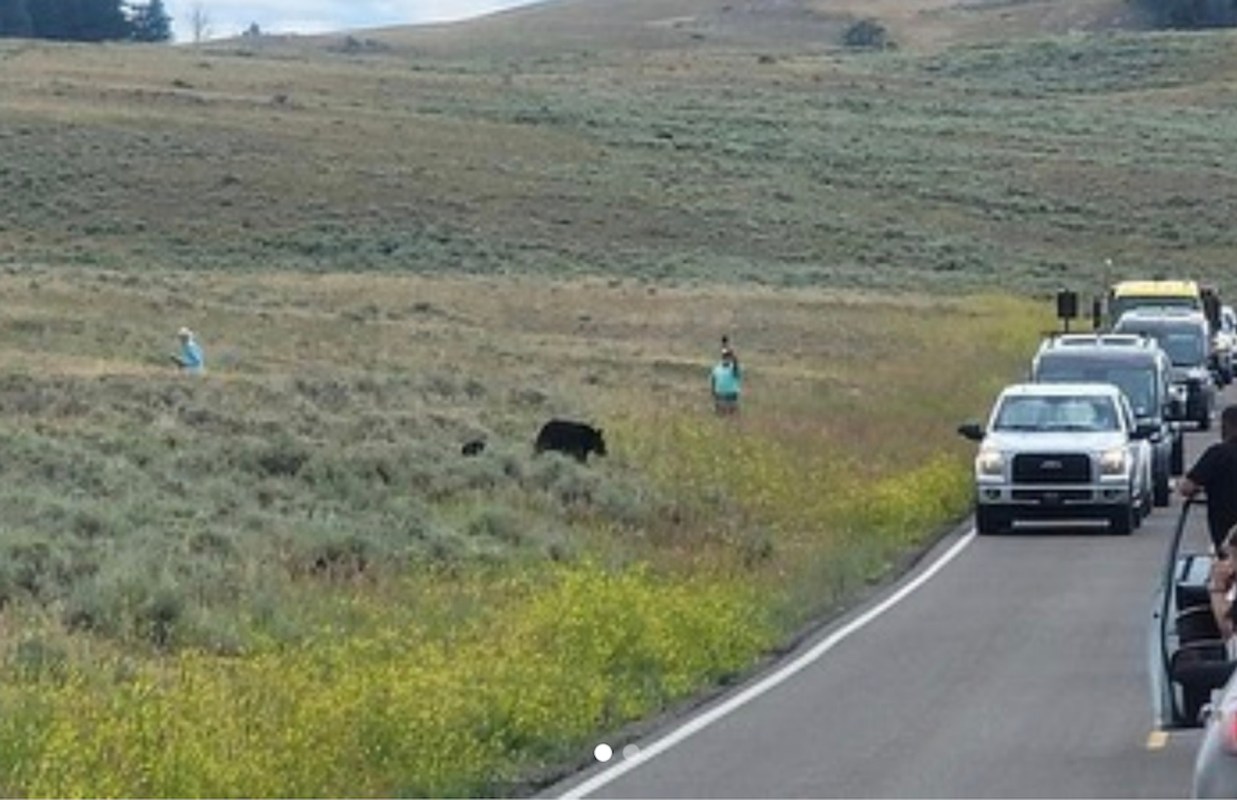A couple of visitors at Yellowstone National Park recently sparked outrage when they approached a mother bear and cubs to take photographs.
Tourons of Yellowstone (@touronsofyellowstone) shared the oblivious and dangerous behavior on Instagram via Jesse Allison (@el_duderonimus).
"Tourons" is a portmanteau of "tourists" and "morons" — and there's plenty of evidence that similar risky actions are widespread, from the man who tried to escort a bear in Pennsylvania to the dozens of people who crowded a grizzly and cubs at Yellowstone.
"My husband and I were in Yellowstone about four weeks ago," one commenter wrote on this post. "Plenty of tourons about. People routinely pull over and get out of their cars to get closer - it kind of ruins the experience for rule abiding folks."
The No. 1 rule at Yellowstone and other national parks is "never approach wildlife."
"The animals in Yellowstone are wild and unpredictable, no matter how calm they appear to be," the National Park Service states. "The safest (and often best) view of wildlife is from inside a car. Always stay at least 100 yards (91 m) away from bears and wolves, and at least 25 yards (23 m) away from all other animals, including bison and elk."
Bears attack one person per year at Yellowstone, and three people were killed in separate encounters in 2011 and 2015.
This instance violated another guideline: that people should not stop in the road or block traffic to view bears. If a bear approaches a car, sightseers are advised to honk and drive away to discourage the animal from doing it again.
Bears should not be approached or followed, and they should be given more space if they are affected in any way by humans.
Bears can be provoked into giving chase or attacking by sudden movements, so people also must corral their children and not run.
Black bears are one of the prizes of Yellowstone, and their coexistence with grizzly bears in the Greater Yellowstone Ecosystem is a rarity south of Canada.
"All of Yellowstone is bear habitat, even the boardwalks around Old Faithful (and other thermal areas)," according to the NPS.
"Never pursue a bear to take its picture. When viewing bears along roads, use pullouts and stay in or near your car."
The blatant flaunting of these rules had some commenters shaking their heads.
"They cannot fathom the danger they are in," one person wrote. "The bear can move so fast that they will not be able to move."
Another said: "Maybe a 'training course' should be required for admittance to the park with a warning that anyone spotted approaching wildlife will be fined severely."
Join our free newsletter for cool news and cool tips that make it easy to help yourself while helping the planet.









